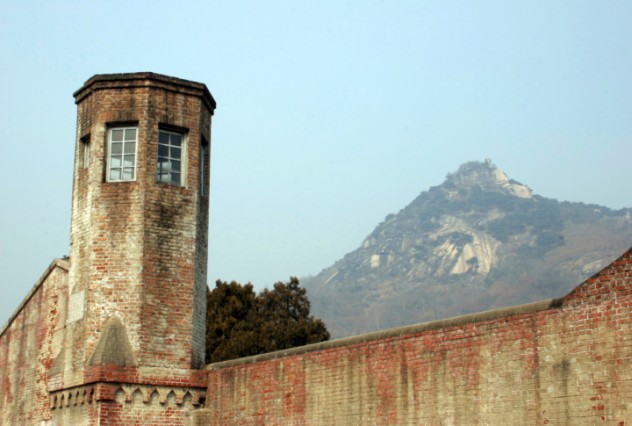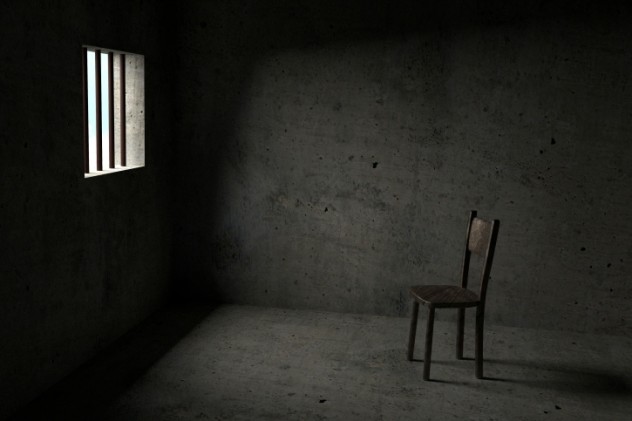 Movies and TV
Movies and TV  Movies and TV
Movies and TV  History
History 10 Things You Didn’t Know About the American National Anthem
 Technology
Technology Top 10 Everyday Tech Buzzwords That Hide a Darker Past
 Humans
Humans 10 Everyday Human Behaviors That Are Actually Survival Instincts
 Animals
Animals 10 Animals That Humiliated and Harmed Historical Leaders
 History
History 10 Most Influential Protests in Modern History
 Creepy
Creepy 10 More Representations of Death from Myth, Legend, and Folktale
 Technology
Technology 10 Scientific Breakthroughs of 2025 That’ll Change Everything
 Our World
Our World 10 Ways Icelandic Culture Makes Other Countries Look Boring
 Misconceptions
Misconceptions 10 Common Misconceptions About the Victorian Era
 Movies and TV
Movies and TV The 10 Coolest Stars to Set Sail on The Love Boat
 History
History 10 Things You Didn’t Know About the American National Anthem
 Technology
Technology Top 10 Everyday Tech Buzzwords That Hide a Darker Past
Who's Behind Listverse?

Jamie Frater
Head Editor
Jamie founded Listverse due to an insatiable desire to share fascinating, obscure, and bizarre facts. He has been a guest speaker on numerous national radio and television stations and is a five time published author.
More About Us Humans
Humans 10 Everyday Human Behaviors That Are Actually Survival Instincts
 Animals
Animals 10 Animals That Humiliated and Harmed Historical Leaders
 History
History 10 Most Influential Protests in Modern History
 Creepy
Creepy 10 More Representations of Death from Myth, Legend, and Folktale
 Technology
Technology 10 Scientific Breakthroughs of 2025 That’ll Change Everything
 Our World
Our World 10 Ways Icelandic Culture Makes Other Countries Look Boring
 Misconceptions
Misconceptions 10 Common Misconceptions About the Victorian Era
10 Amazing Escape Attempts By Prisoners Of War
The Second World War saw the construction of vast numbers of camps to house prisoners of war. Across every continent on earth, thousands upon thousands of men and women brave enough to be shot at and clever enough to know when to surrender, were held in confined spaces and allowed to interact with each other. Unsurprisingly, order didn’t last long, and various escape attempts were made—some simply to return home, some to climb mountains, and even some just to get lucky.
10 French Prisoners Record Escape Attempts
Oflag 17-A was a German prisoner-of-war camp in Austria, which housed 5,000 inmates—mostly French officers, plus a few hundred Poles. For some reason, imprisoning thousands of individuals smart and cunning enough to be promoted to a high rank within the same, confined space didn’t raise any alarm bells for the Germans. The French immediately put together an escape committee, deciding that they should smuggle a camera into the camp, piece by piece, in sausages, to document the escape.
Entirely in secret and risking their lives, the prisoners filmed around 30 minutes of video detailing life in the camp as well as their actual escape attempt. The main tunnel was underneath the theater which the guards had let the inmates build. Decorated with branches, obscuring the guards’ view, and close to the fence, the tunnel was finally made possible when the International Red Cross demanded that the prisoners be given shovels to dig trenches for air-raid protection. On September 17, 1943, the tunnel was finished, 90 meters (300 ft) long and emerging just a few meters from the fence. On the same night, a group escaped and with the disappearance going unnoticed, another group went out the next night. The largest breakout in World War II, 132 men escaped, although 126 of them were recaptured. Only two escapees were known to have made it home.
9 Italian Prisoner Escapes To Climb Mount Kenya

Felice Benuzzi was a member of the Italian Colonial Service in Addis Ababa when he was arrested by the British. Camp 354, in Nanyuki, 160 kilometers (100 mi) north of Nairobi, Kenya, sat at the foot of Mount Kenya and was “home” to 10,000 prisoners of war, mostly civilians. Benuzzi described life in the camp as tedious and decided to live life on the edge, beginning with this escape.
Benuzzi planned to get out of the camp, climb Mount Kenya, and then (with nowhere else to go) return to his bunk at Camp 354. Leaving a note to tell the British that he would return, Felice and two other prisoners that he’d recruited for the climb snuck out of the camp. Avoiding both the British and the wildlife, including bull elephants, the group began their dangerous trek to Mount Kenya, with only the makeshift supplies they could assemble in the camp. Once there, they climbed one of the most dangerous mountains of the time, ascending to 5,000 meters (16,300 ft), the third-highest peak of Mount Kenya and taller than any peak of the Alps. Oxygen levels are only half of what they are at sea level. They raised a makeshift flag and walked back down the mountain. After achieving what seems impossible, the group braved death once again to sneak back into the camp. Felice Benuzzi survived the war and later wrote a book about his adventure.
8 German Prisoner Builds Hot Air Balloon

Karl Rabe, a crew member aboard the German U-Boat 35, was captured and imprisoned in Lethbridge Internment Camp, Canada, when his vessel was attacked on November 29, 1939. Despite being imprisoned on a whole different continent from home, Karl made at least four escape attempts during his time at Lethbridge. On one attempt, he snuck out of the camp hospital while still under the effect of drugs and, barefooted, walked all that night and the next day in the snow in an attempt to reach the then-neutral USA before being caught. In his most famous escape attempt, Rabe managed to assemble a hot air balloon in the camp. Using sleeping bags as fabric, Rabe sewed together a 7 x 3 meter (24 x 10 ft) balloon by hand. Unfortunately, he failed to get off the ground, since he didn’t realize that his heating gas was actually heavier than air.
7 The Only Successful Mass Escape From Japanese Prison

Second Lieutenant Sam Grashio of the US Air Force was based in the Philippines when the Japanese invaded on December 8, 1941. Captured during the defense of Luzon on April 9, 1942, the defenders began the Bataan Death March to their internment camps, during which thousands died. Survivors reached Camp O’Donnell, where they were imprisoned and, in many cases, starved to death.
In October 1942, those judged to be fit to work (only 1,000 of the original 75,000 captured, including Sam) were sent to Davao on the southern island of Mindanao and forced into manual labor. By April 1943, only half of the workers were still able to physically work on a regular basis. After three months of planning, Sam Grashio, along with nine other Americans and two Filipino convicts, made an escape by jolting into the jungle to leave the horrendous conditions behind them. With the Filipinos as guides, the group waded through swamp and jungle for three days. Eventually, they met a group of Filipino guerrillas, led by an American, Wendell Fertig. Even after their ordeal on the death march, the group worked with the guerrillas for several months, collecting intelligence which they traded with the Australians for a submarine ride to friendlier territory.
6 German Escapes Canada And Makes His Way Home

Franz von Werra was a Luftwaffe flying ace credited with eight aerial victories and five aircraft destroyed on the ground. On September 5, 1940, von Werra was shot down in England and captured. On October 7 and December 20, 1940, von Werra twice tried to escape and was recaptured both times. One of these attempts involved jumping out of a window on a moving train. After the second attempt, Franz was transferred to a camp in Canada, with the Allies thinking that the Atlantic Ocean would be enough to stop his escape attempts.
The next month, on January 21, 1941, von Werra escaped for the last time. He managed to cross the border to the USA, where he traveled on to Mexico, South America, and Spain to make his final leg of the journey to Germany, arriving on April 18, 1941. As early as July 1941, Franz was spotted on the eastern front, claiming 13 victories and later dying in a training accident on October 25, 1941. He is remembered as the only German prisoner of war held by the British to escape and return home during the war, having crossed a continent and an ocean to do so.
5 German Escapes And Tutors The Dalai Lama

Heinrich Harrer, a climber and German national, was in India on a expedition when the war broke out. As a young but experienced climber, Harrer was one of the fastest downhill skiers in the world and had easily secured his position on the expedition. The British, fearing the threat of spies, rounded up German and Austrian nationals in India at the outbreak of war, with Harrer and his expedition being sent to Dehradun camp.
Though it later became apparent that Harrer had been a member of the SS, it is believed that he was in India as a non-combatant. After several attempts, Harrer managed to escape the camp with a fellow prisoner in 1944. Surrounded by Allied forces, they took the only escape route that they could, finding a yak and making a 20-month journey across the Tibetan plateau, in freezing weather, to neutral Tibet. Finally arriving in Lhasa on January 15, 1946, the war was over but the two decided to stay. Harrer became a government employee, eventually becoming the tutor of the 14-year-old Dalai Lama.
4 Brit Escapes 200 Times To Meet German Lover

Horace Greasley, a British soldier caught during the retreat to Dunkirk, was imprisoned in Lamsdorf Camp, Poland. What made Horace an amazingly interesting person was not the fact that he stood face-to-face with SS leader, Heinrich Himmler, and demanded prisoners be given better rations. It’s due to the fact that he escaped and returned to his camp more than 200 times for the purpose of getting lucky. At Lamsdorf, which was attached to a quarry, Greasley met the daughter of the director of the marble quarry, Rosa. Part Jewish, she was hiding her secret by working as an interpreter for the camp. In late 1940, Greasley was transferred to Freiwaldau Camp, an annex of Auschwitz, 65 kilometers (40 mi) away from Rosa. This didn’t stop Horace, who, on more than 200 occasions, broke out of the camp (being so far away from freedom, it had less security) and met with Rosa. Throughout their relationship, Rosa helped Horace to smuggle food and radio parts into the camp.
3 Scot Survives Alps And Starvation To Escape

Johnnie Matheson, of the 51st Highland Division, was captured in Northern France when St. Valery fell to the Germans. He was forced to march, along with thousands of others, across France and into Germany. As a prison laborer in Central Germany, he worked daily from 2:45 AM to 7:00 PM. On his fourth escape attempt, Johnnie nearly made it to Switzerland until he was faced with swimming a river, something he hadn’t been taught in basic training. Recaptured by the Gestapo, the Scot had his fingernails removed and was thrown into solitary confinement 200 steps underground.
When he was eventually moved to a hotel and assigned to work at a factory, Johnnie, now fluent in German, convinced the owner to provide him with supplies for an escape. In June 1944, prisoners were marched into the Alps with the belief that they were to be killed. Two days into the march, Matheson hid in a ditch. After days of walking and now only 38 kilograms (84 lbs) in weight, Johnnie was found by an American patrol. With the war still raging, he fought with the Americans for months to the Czech border and eventually on to Prague. After peace was declared, he was given a requisitioned BMW and £1,000 to find his way home.
2 German Escapes And Lives As An American

Reinhold Wilhelm Pabel arrived at a US POW camp in Norfolk, Virginia, in January 1944, after being captured. Able to speak English, Reinhold, claimed that he was putting on a play and secured a white shirt and blue dye for his prison pants after being transferred to Camp Washington. On September 10, 1945, Pabel put on his civilian clothing, crawled under the fence and, after briefly hiding in a bush, walked down the highway . . . in full view of the camp . . . to freedom. With only $10.20 in his pocket from selling his medals and equipment, Reinhold hitchhiked his way to Chicago, changed his identity to Phillip Brick and applied for a social security only 10 days after escaping. Getting various jobs as a dishwasher, in a bowling alley, and at the Chicago Tribune newspaper, the fugitive paid his income tax six months after escaping. On March 9, 1953, the FBI, who had Reinhold on their wanted list, tracked him to a bookstore that he now owned. Despite legal and financial support from friends, he was deported to Germany (or what was left of it) along with the American woman he had married and the children they had together. They were allowed to return the next year.
1 Brit With No Legs Makes Multiple Escape Attempts

Douglas Bader was one of the RAF’s finest pilots, with 23 victories. On August 9, 1941, he suffered a mid-air collision over Le Touquet, France. Descending toward Earth, Bader was captured when his parachute hit the ground. Upon his capture, the Germans were shocked to learn that this ace had no legs, having lost both in an accident, and with both of his prosthetics being lost in the crash. Taken to a hospital in St. Omer, Douglas made his first escape attempt as soon as one of his legs was returned to him, though his bedsheet rope and one leg only got him as far as a local farm before being recaptured.
The Germans and especially the Luftwaffe, rather impressed by the no-legged pilot, managed to convince the British to send a replacement for Bader’s lost leg via airdrop. Moved to Stalag Luft VIIIB, Bader and four other prisoners made an escape attempt, but they were caught out by a Luftwaffe pilot who had found Douglas missing after going to visit him. The Germans, rather embarrassed that they kept losing a man with no legs, eventually moved him to Colditz Castle, the place for “problem” prisoners. Despite this, Bader continued to make escape attempts until the Castle was liberated.
Mark is an award-winning 10 meter swimmer and not-so-award-winning shoe wearer and air breather. His degree in History and Geography doesn’t get him nearly as many women as he had expected. You can find him on Twitter here.








